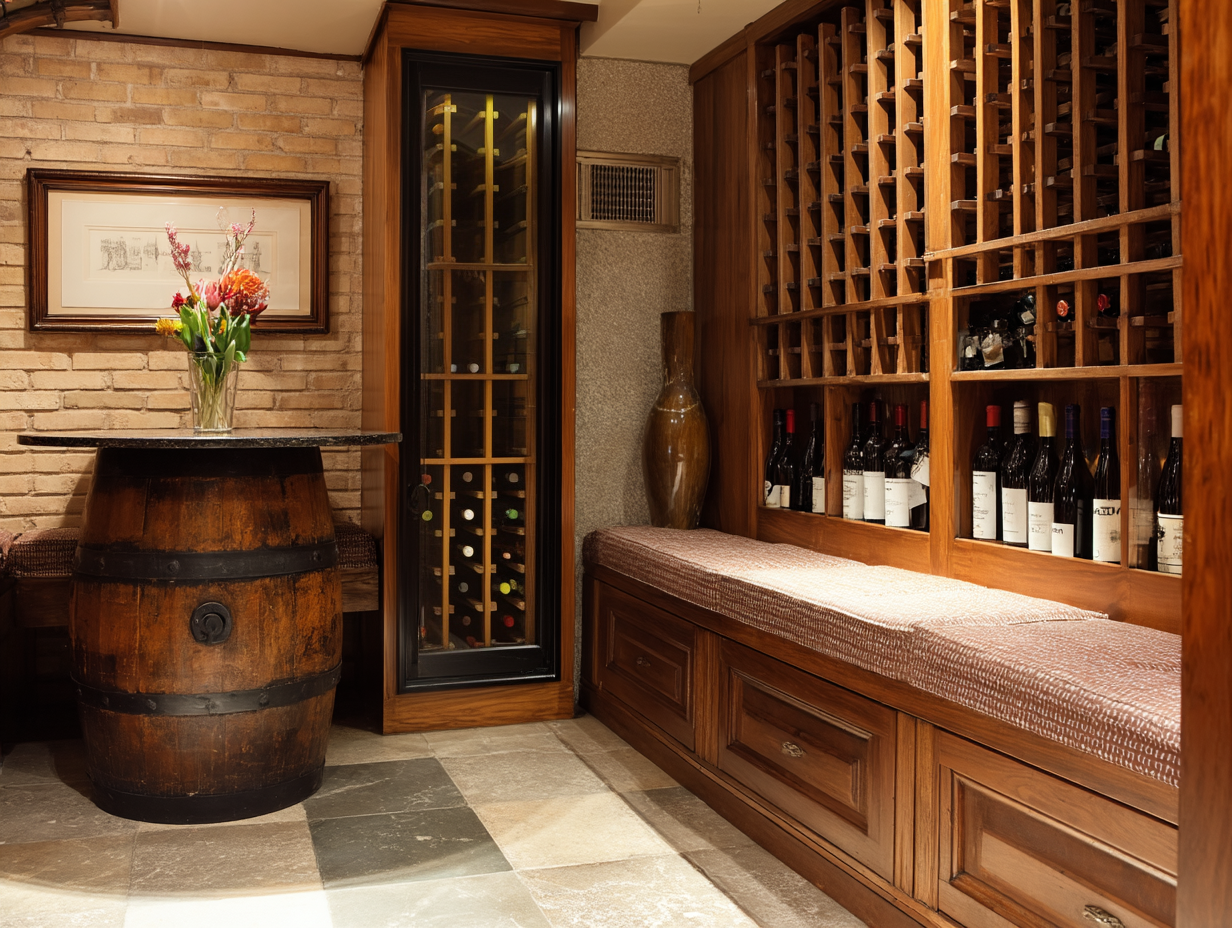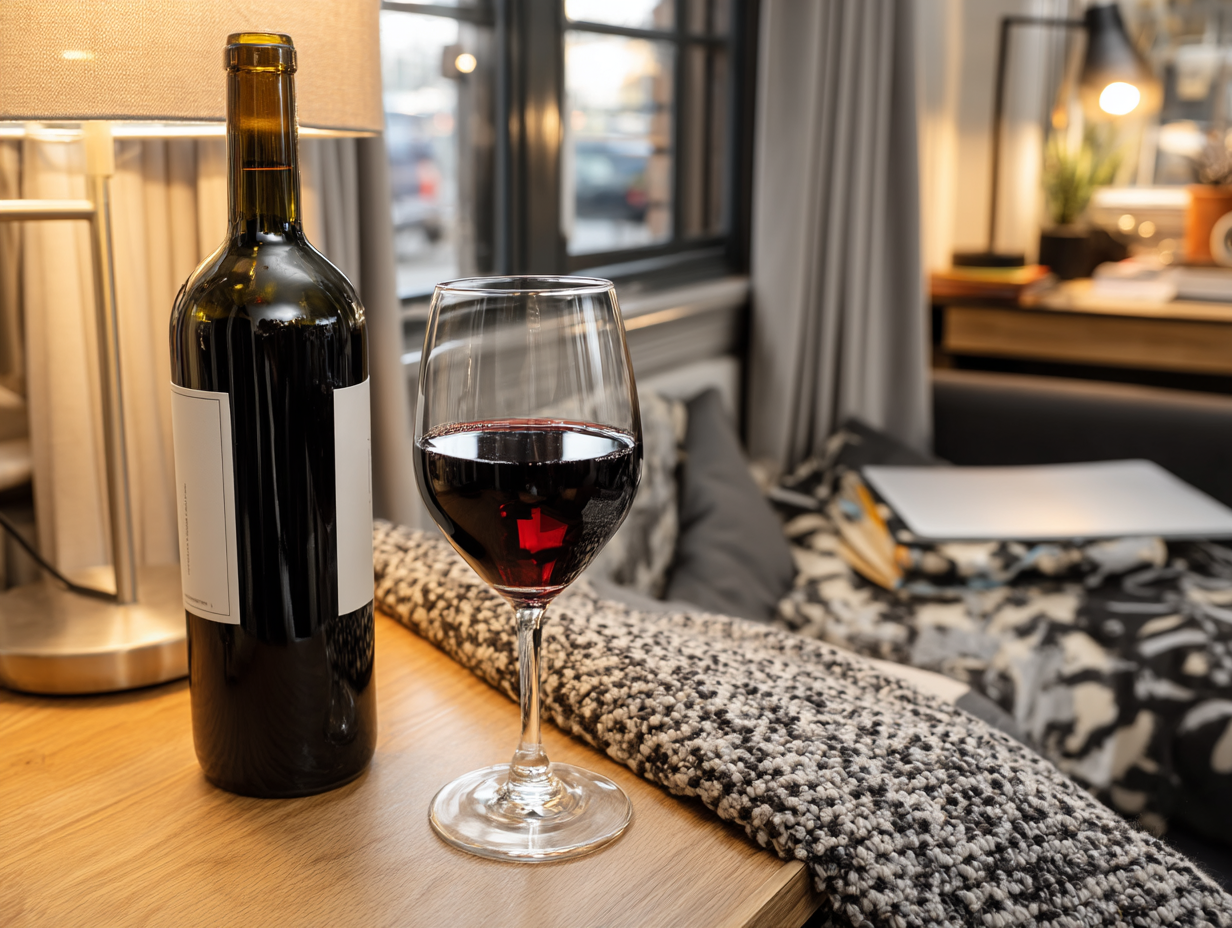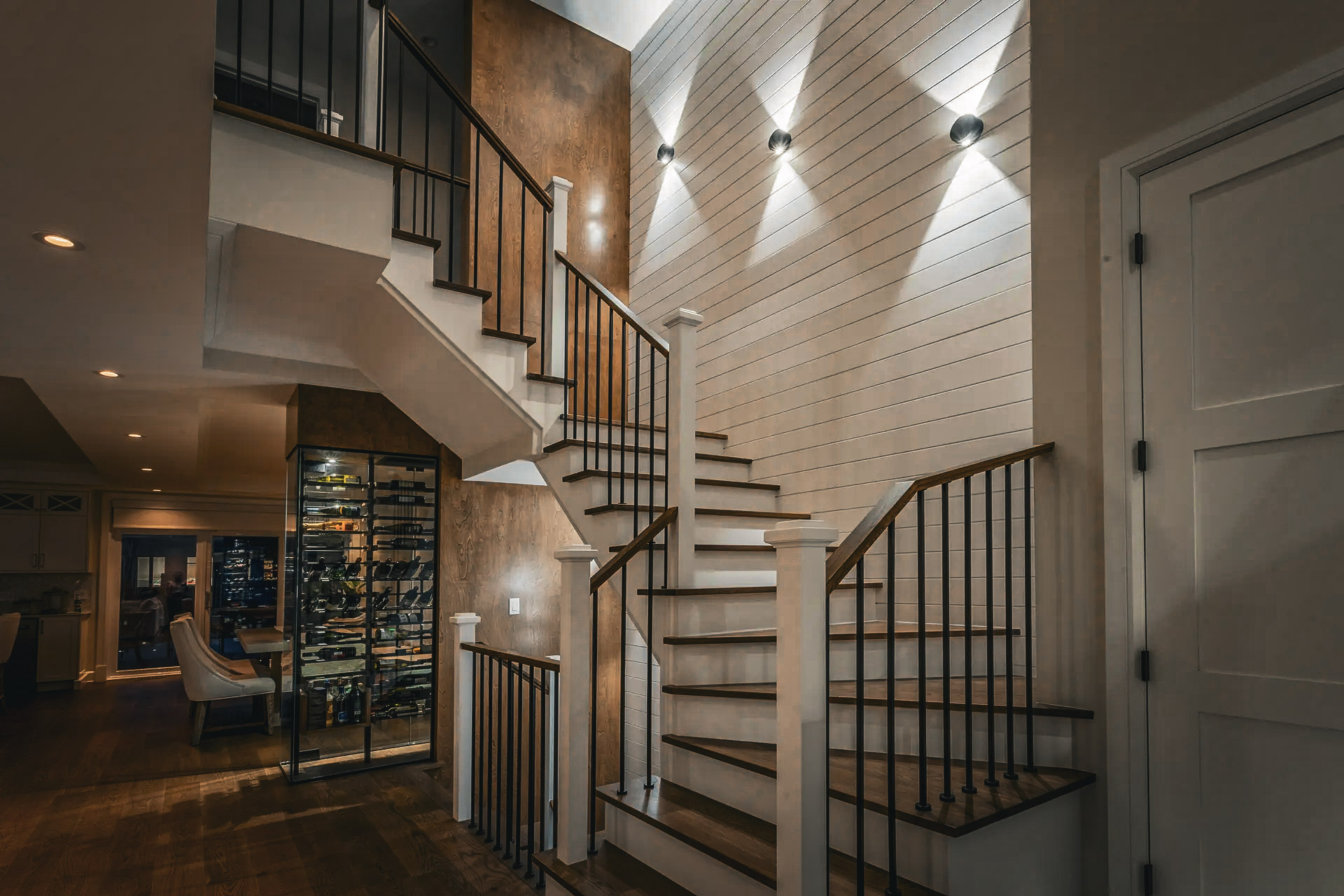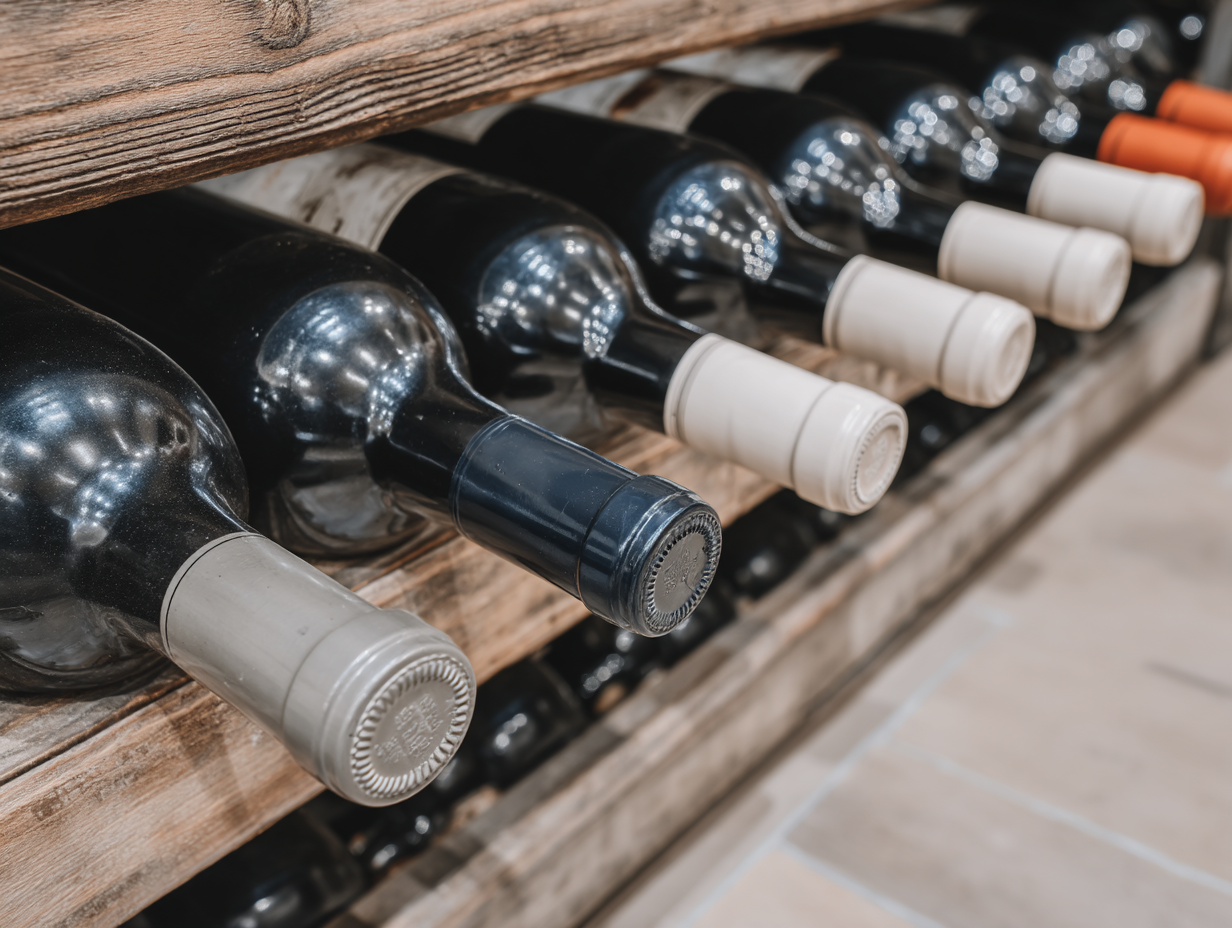
What wine lover hasn’t dreamed of having their own wine cellar to keep fine bottles within easy reach? To make this dream a reality, several rules must be followed. But what are the key principles that should guide you through this project?
A Well-Insulated, Odor-Free Wine Cellar

Source : RenoQuotes
The most important factor is the room’s insulation, which is essential for preserving wine in optimal conditions. Use materials like spray foam, mineral wool, or rigid insulation boards. If you choose rigid panels, ensure no gaps remain to prevent air leaks and heat intrusion.
Insulation levels should range between R-20 and R-30. A vapor barrier is essential to maintain stable humidity and should be sealed with tape behind mold-resistant drywall, which is typically used for finishing.
The vapor barrier must always be installed on the warm side of the insulation to be effective. Consider placing a layer of plywood over the drywall to securely screw in your wine racks. The walls should be constructed with 2x4" or 2x6" framing.
Also, avoid storing toxic products or anything with strong odors in the room. Corks are porous and can absorb odors, which can compromise the wine.
Effective Temperature and Humidity Control

Source : RenoQuotes
What’s the Ideal Temperature?
In addition to insulation, temperature control is crucial to prevent premature aging. Maintain a consistent temperature between 12°C and 14°C (53°F to 57°F).
Cooling units for wine cellars should be placed inside the cellar and draw air from another room. Never use a regular home air conditioner—it causes damaging vibrations, won't cool the space sufficiently, and cannot maintain the proper humidity.
Use mold-resistant latex paint to protect against potential damage caused by high humidity.
Maintain Balanced Humidity Levels
Experts debate the ideal humidity level, but most agree it should be between 50% and 80%. Exceeding this range can cause issues:
Too much humidity leads to moldy corks and damaged labels.
Too little dries out the cork, allowing air in and wine to escape.
Use a hygrometer to monitor humidity. A refrigeration unit will help maintain the correct level.
If the humidity is too low, place a bucket of water in the room or hang damp laundry. You can also drill 1–2 cm holes in the floor or every 6 cm in the walls to raise the humidity by 1–2%.
To maintain these conditions, the room must be airtight. Install a door with weatherstripping and at least R-16 insulation. If you choose a glass door, make sure it’s UV-treated thermal glass to prevent heat from sunlight.
Choosing the Right Location

Source : 9515-2955 quebec inc
Select the location carefully. Avoid proximity to vibration sources—vibrations can mix oxygen with wine molecules and alter flavor.
Avoid rooms with concrete walls to reduce electrical installation costs. For air conditioning, you’ll need an opening in the wall for the unit, which must be placed inside the cellar.
Flooring
Given the high humidity, opt for flooring that can withstand moisture such as natural stone, marble, ceramic, or slate. Avoid carpeting or wood floors. If the concrete floor isn’t insulated, you can install a slate surface.
Lighting Your Wine Cellar
Use LED lighting to maintain a cool, humid environment. Consider installing dimmable fixtures to avoid over-lighting. Recessed ceiling lights require housings. An indirect 30W bulb can also work well.
Because light can degrade wine, keep the cellar dark. If your collection is small and for short-term use, this is less important. For a darker atmosphere, use dark paint shades. Avoid windows entirely.
Storing Your Bottles

Source : RenoQuotes
Store Bottles Horizontally
Plan for racks that allow horizontal bottle storage. This keeps the cork moist and prevents air from entering the bottle. This doesn’t apply to screw-cap bottles.
For multiple bottles of the same wine, bulk storage racks (diamond, cube, or rectangular shapes) are ideal. Use individual racks for rare or unique bottles.
Tip: Store dry white wines closer to the floor, where it's cooler.
Choosing Materials
Odorless cedar is highly recommended for its durability. You can also choose walnut, Brazilian mahogany, or padauk. Padauk, with its reddish-orange hue, is known for strength and durability.
Wine rack finishes vary: lacquered, stained, or hammered. For a modern look, consider metal or glass.
Managing Your Collection
Wine cellar owners should track their collection. Keep an inventory listing each bottle (name, purchase location, vintage), and store a copy outside your home. Inform your insurance company in case you ever need to make a claim.
Average Cost of a Wine Cellar
Don’t go overboard. Experts recommend setting your budget based on your home’s value. Remember, if you sell your house, you’ll want to recoup the investment.
With a budget between $5,000 and $20,000, you can build a beautiful, high-quality wine cellar.
Looking for something else?
Related articles
The latest industry news, interviews, technologies, and resources.

Editorial Team
•07 Nov 2023
Noisy pipes are likely the cause of a significant problem, often leading one to hire a plumber.

Amanda Harvey
•07 Nov 2023
Let's be honest, modern life is busy. Between work, cooking, cleaning and additional day-to-day activities, every hour's filled to the brim. It's normal that you don't have the time to think about out-of-sight household things like attic ventilation. But you may not realize how important proper roof and attic ventilation actually is, not only for the maintenance and lifespan of your roof but for lower energy bills as well as the longevity of your home. Lack of proper ventilation can lead to a world of problems, and we're going to offer some information on a common solution: attic ventilation!

Editorial Team
•05 Dec 2023
We’re still a few weeks (months) away from summer, but it’s never too early to start thinking about that warm weather and its effect on your home. During those particularly scorching months, air conditioning is a modern-day lifesaver. Even on the hottest of summer afternoons, it’ll cool you down and bring your energy levels back up.

Editorial Team
•05 Sep 2024
Mould doesn’t just grow any place, any time. It has conditions! Although moisture is the leading cause, mould finds other ways to build its colony. For the homeowner, this can become a serious problem, as mould isn’t only unappealing, but has serious health implications for yourself as well as your friends and family.

Editorial Team
•01 Dec 2025
Metal roofs, particularly pre-painted galvanized steel, are among the strongest and most durable on the market. They can last between 60 and 100 years, providing long-term protection for your home. Despite this durability, they remain susceptible to corrosion, temperature fluctuations, and weather conditions. Like any roof, regular maintenance is necessary to preserve both their efficiency and appearance.